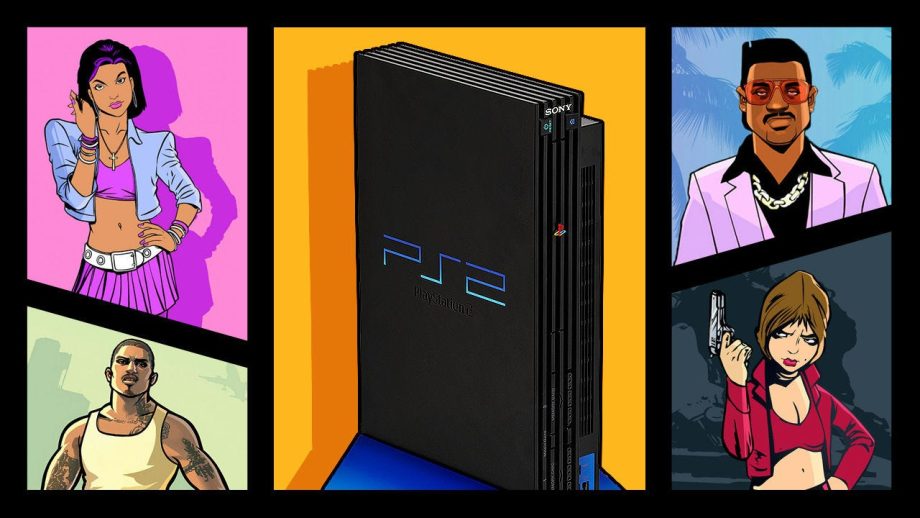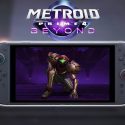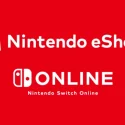Pints of beer after work in a cosy London pub. A glass of wine in the evening at a villa in the Sunset Marquis hotel, West Hollywood. A phone call in the dark outside a Chinese restaurant in Windsor, England.
These three disparate scenes, all more than 5,000 miles from Sony’s headquarters in Tokyo, were backdrops for a decision that helped define the PlayStation 2, Sony’s landmark console that celebrates its 25th anniversary in North America today.
It’s the best-selling console of all time for well-documented reasons: its massive library, its headstart on the Xbox, its mid-life price cut, and its affordability as a DVD player. But the deal that brought a trio of Grand Theft Auto games – GTA 3, Vice City, and San Andreas – to the PS2 before any other platform was also vital. They collectively make up three of its top six sellers. Some people bought the PS2 just to play GTA and if you didn’t have one, you were nagging a friend who did.
Chris Deering, the then-president of Sony Computer Entertainment Europe, estimates the deal boosted console sales in Europe by a fifth – a huge margin.
We’ve heard snippets about this deal and about that key meeting at the Sunset Marquis before. But IGN has now spoken to four people at the centre of it all who can tell the story in more detail than ever. They reveal previously unknown twists and turns in negotiations: how Sony nearly missed out on exclusivity in the US, how Take Two got cash and a discount on production costs from Sony, and how Microsoft could’ve derailed the whole thing.
The original 2D, top-down GTA games sold decently but scored middling reviews, and Deering’s interest in GTA 3 was only sparked by a chance conversation.
“We used to have these company pub nights,” he says. “It gave me a chance to deal with people I would never talk to and ask them some dumb questions.”
He asked one such dumb question to the “very sharp” Sarah Thompson, who oversaw a Sony team evaluating third-party games. “I said: ‘You seen anything?’ She said: ‘Yeah, GTA is looking really cool.’ It put it at the back of my mind.”
It was actually a contractor called Andy Macoy who had first flagged a GTA 3 test build as impressive. As well as being filed in Deering’s brain, it sat on the team’s shortlist of games that Sony might want to secure as an exclusive at E3 2000, according to the then-vice president of publisher and developer relations at SCEE, Zeno Colaço, who was Thompson’s boss.
Deering went to LA that June knowing he needed exclusives in order to win a second console generation in a row. Microsoft’s Xbox was on the horizon and Bill Gates had showed off a prototype in March.
“They get a billion dollars a year from Windows licenses. They can do anything they want – they just have to want,” he says. “How do we get out ahead of this? That was in the back of my mind. I didn’t want them to come in and take away the chance of getting two console [generations] in a row. It was almost like a personal, I don’t want to say vendetta, but it could have rained on my parade. So that was a hidden motivation.”
Deering and David Reeves, then head of marketing at SCEE and later Deering’s replacement as president, met various publishers at a villa in the Sunset Marquis hotel. Take Two, the owner of Rockstar Games, was on the list.
Every person at that meeting tells a slightly different version of the story. Non-disclosure agreements obscure some of the details and the intervening 25 years have clouded memories. It’s not clear what was negotiated in the room and what was handled in follow-up phone calls.
But we know at least six people attended. From Take Two it was Kelly Sumner, who led the company outside of the USA and would become CEO in 2001, and Gary Lewis, who was COO and later president of international. From Sony it was Deering, Reeves, Colaço, John Brunning from the legal team, and possibly also Jim Ryan, who later led Sony’s gaming division.
Colaço claims Sumner initiated the meeting “to complain that another one of Take Two’s games was getting a knock back from our content group” – the same group that had earmarked GTA 3 as a winner. He thinks that game may have been State of Emergency, which Sony thought was “gratuitously violent”.
“Anyway, we listened to their complaints,” he says. “I explained our position and thoughts of what adjustments might be an acceptable compromise.” Then, “to smooth the meeting over and throw them a bone, we asked them whether we could do an exclusivity deal on GTA and another game, with the background knowledge that GTA was doing something original”.
Sumner rejects this version of events. “I’m not saying we were happy about the approval process” for games, he says, but any discussion of that was not linked in “any way at all” to the GTA deal. Exclusivity would never have been used as any kind of “sweetener” for Take Two, he says, because “Sony needed [it] more than we did”. (It’s also worth pointing out that Deering intended to bring up exclusivity at the meeting anyway, and that Lewis, from Take Two, also says he doesn’t recall what Colaço describes).
In any case, the starting point of the offer, Colaço says, was “co-marketing” for GTA 3. Basically, Sony would match $1m of Take Two’s marketing money. It offered the same deal for another Rockstar game, but he doesn’t recall which one.
There were at least two other elements to the deal, although they appear to have been negotiated after that initial E3 meeting, likely back in the UK between Deering and Sumner. First, cash up front. Second, what Sumner describes as a “reduction on production costs”.
“In those days, production costs were really, really expensive,” he explains. “Basically for the right to buy a disc and have it packaged and delivered to your warehouse, I think in around 2000 is about $11 per disc… And when you’re selling millions and millions of discs, which hopefully we were, any reduction on that is very nice, thank you very much.”
He won’t say how much of a discount it was, but Deering says it was “in the neighbourhood of a couple of pounds a unit, maybe $3”.
GTA 3 sold 8.5 million copies on PS2 – which, at $3 a unit, would represent more than $25m in potential savings for Take Two and Rockstar.
Take Two also negotiated incentives in exchange for, among other things, Sony getting the rights to sell exclusive software bundles that would include GTA, Colaço says. And as for the cash, Sumner recalls Sony agreeing to pay a “significant amount of money” up front – back then, Take Two was not the mega multi-billion dollar company that it is today, and “any millions that were coming in were gratefully received at that stage”.






